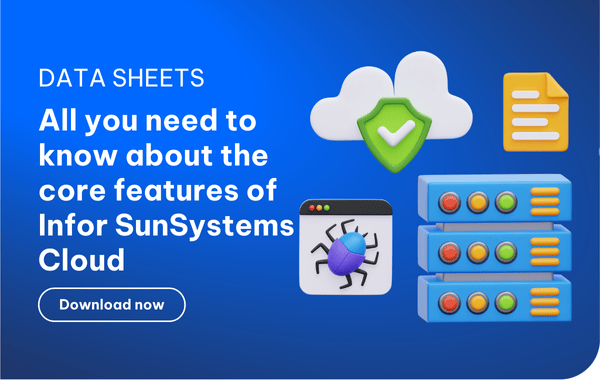Vietnam’s Ministry of Finance has made significant progress in converging Vietnamese Accounting Standards (VAS) with International Financial Reporting Standards (IFRS) in recent years. However, there are still some significant differences between IFRS and VAS that businesses need to be aware of. These distinctions can be found in inventory costing, impairment write-downs, contingency management, debt covenant management, and revenue recognition.
Read more: Everything You Need to Know about International Financial Reporting Standards (IFRS)

Contents
- Presentation of financial statements
- Business combinations
- Tangible fixed assets
- Intangible fixed assets
- Inventory
- Extraordinary items
- Cash flow
- Income taxes
- Financial instruments
- Consolidated and separate financial statements
- Events after the balance sheet date
The major differences between IFRS accounting and VAS accounting
Presentation of financial statements
One of the most notable differences between IFRS and VAS is in the presentation of financial statements.
IFRS requires a more comprehensive set of financial statements, showcasing management’s key assumptions and other key sources of estimating uncertainty. VAS, on the other hand, demands an analysis of changes in equity in the notes.
Business combinations
Under VAS, goodwill is amortised over its estimated useful life of no more than 10 years after acquisition and is not subject to a compulsory annual impairment review.
This means that businesses in Vietnam following VAS accounting standards are required to spread the cost of acquired goodwill over a maximum of 10 years. Unlike IFRS, there is no requirement for an annual impairment review of goodwill under VAS.
Read more: How SunSystems is localised for the Vietnam market
Tangible fixed assets
IFRS accounting recognises property, plant, and equipment (PPE) as tangible fixed assets and applies stricter measurement and evaluation rules to ensure accuracy and transparency. On the other hand, under VAS, impairment write-downs of PPE are not permitted.
By adopting IFRS accounting standards, companies can benefit from a more comprehensive and globally recognised framework for reporting their financial position. This can enhance transparency, comparability, and credibility, attracting more investors and stakeholders.
Read more: Communicating the Value of Intangible Assets
Intangible fixed assets
These assets must be amortised over a useful life of no more than 20 years and recognised at cost less accumulated amortisation under VAS. Unlike IFRS, revaluation or write-down for impairment is not allowed in VAS accounting standards.
This means that businesses following VAS must maintain the original cost of intangible fixed assets on their balance sheets and cannot adjust their value based on market conditions or changes in their useful life.
Additionally, under VAS, certain pre-operating costs are charged to the income statement rather than being recognised as expenses as in IFRS. This means that these costs are considered part of the company's operational activities and are reflected in the calculation of its net income.
Read more: Digital Transformation in Finance and The Changing Role of CFOs
Inventory
To comply with international standards, businesses that currently value inventory using the LIFO (last-in, first-out) or average cost methods will need to switch to either the FIFO (first-in, first-out) or weighted average method under IFRS. This change is necessary to align with the principles of IFRS, which emphasise the use of more objective and consistent valuation methods.
The switch from LIFO, or average cost, to FIFO, or weighted average, can have significant implications for businesses as it may result in a change in the reported value of their inventory. The FIFO method assumes that the items purchased or produced first are the first ones to be sold or used, while the weighted average method calculates the average cost of all units in inventory.
These methods provide a more accurate representation of the cost of inventory and can lead to better decision-making and financial reporting.
Read more: How technology helps with the transition to IFRS
Adopting the FIFO, or weighted average method, under IFRS can also enhance comparability among companies, as it is a widely accepted practice internationally. This allows investors and stakeholders to understand better and analyse financial statements, promoting transparency and credibility in the reporting process.
Extraordinary items
IFRS accounting precludes the recognition of extraordinary items, which are events or transactions that are considered highly unusual or infrequent and are not expected to occur regularly in the future. These extraordinary items can include natural disasters, significant legal settlements, or major changes in accounting principles.
By not recognising extraordinary items, IFRS aims to provide a more consistent and transparent representation of a company's financial performance. This makes it easier for stakeholders and investors to comprehend a company's operational results without the distortion that comes from one-time occurrences.
Instead of recognising extraordinary items separately, IFRS requires companies to include the effects of these events within their normal operating activities. This ensures that the financial statements reflect the business's ongoing operations and provide a more accurate picture of its financial position.
Read more: 5 Most Common Budgeting Approaches and Their Pros & Cons
Cash flow
IFRS is more restrictive than VAS when it comes to the treatment of cash flow. Under IFRS, interest paid and dividends received are required to be classified as operating cash flows, while dividends must be classified as financing cash flows. On the other hand, VAS allows companies more flexibility in how they handle dividends, interest, and overdrafts.
This difference in treatment can have significant implications for financial reporting. By classifying interest paid and dividends received as operating cash flows, IFRS provides a clearer picture of a company's operational performance and its ability to generate cash from its core activities. Dividends, on the other hand, are classified as financing cash flows under IFRS to reflect the fact that they represent a return of capital to shareholders.
In contrast, the flexibility of VAS can be beneficial in certain situations where companies may have unique cash flow arrangements or strategic considerations.
Read more: Poor Cash Flow, Overdue Payments Thwart Your Accounts Receivable Processes?
Income taxes
VAS does not address temporary differences and deferred tax recognition for business combinations, goodwill, assets carried at fair value, or government grants. This means that companies following VAS may not accurately reflect the future tax consequences of these items in their financial statements.
In contrast, IFRS requires companies to recognise and measure deferred tax related to these items based on the temporary differences between the tax and accounting treatment. This ensures that the future tax consequences are properly reflected in the financial statements.
Financial instruments
IFRS accounting introduces the concept of “fair value," a method of valuing financial assets and liabilities based on their current market value. This approach provides a more accurate representation of the true worth of these assets and liabilities, as it takes into account the current market conditions and investor expectations.
This differs from VAS, where financial assets and liabilities are typically measured at historical or amortised costs.
The use of fair value in IFRS accounting helps to ensure transparency and comparability in financial reporting. By valuing assets and liabilities at their current market value, investors and stakeholders can make more informed decisions as they have a clearer understanding of the financial health and performance of a company.
In addition to valuing financial instruments at fair value, IFRS also requires the disclosure of the nature and extent of risks arising from these instruments. Companies following IFRS accounting standards must provide detailed information about the risks associated with their financial assets and liabilities, such as credit risk, market risk, and liquidity risk. This helps investors and stakeholders assess the level of risk exposure and make more informed investment decisions.
Consolidated and separate financial statements
VAS accounting standards only allow investments in subsidiaries in the parent's separate financial statements to be carried at cost; the parent company records the investment at its original cost and does not adjust it based on changes in market value.
Furthermore, VAS provides some flexibility by allowing exemptions from consolidation for parents and subsidiaries under certain conditions. Companies following VAS accounting standards do not have to consolidate the financial statements of their subsidiaries with their own.
Instead, they can present separate financial statements for the parent company and its subsidiaries, reducing the complexity and costs associated with the consolidation and allowing the parent company to focus on its own financial position and performance while still providing relevant information about its investments in subsidiaries.
Read more: Financial consolidation: Dealing with intercompany transactions
However, while VAS allows for exemptions from consolidation, companies must still disclose the nature and extent of their investments in subsidiaries in their separate financial statements to ensure transparency and provide stakeholders with information about the parent company's involvement in subsidiary operations.
Events after the balance sheet date
IFRS provides guidance on the determination of the date the financial statements are authorised for issue, taking into account various factors such as the management structure, statutory requirements, and the specific procedures followed in preparing and finalising the financial statements.
This determination of the date is crucial, as it signifies the point at which the financial statements are considered complete and ready for distribution to stakeholders.
The management structure of a company plays a significant role in determining the date of authorisation. Depending on the size and complexity of the organisation, there may be multiple levels of management involved in the preparation and review of the financial statements. Each level has its own set of responsibilities and timelines to follow, ensuring that the statements are accurate and follow the applicable accounting standards.
Statutory requirements also play a crucial role in determining the date of authorisation. Different jurisdictions may have specific regulations regarding the preparation and submission of financial statements. Companies must comply with these requirements to avoid any legal or regulatory issues.
Furthermore, the procedures followed in preparing and finalising the financial statements also impact the determination of the authorisation date. These procedures include activities such as gathering financial data, conducting audits, reviewing internal controls, and ensuring the accuracy and completeness of the information presented in the statements. Each of these steps takes time and must be completed diligently to ensure the integrity and reliability of the financial statements.
IFRS helps companies maintain consistency and transparency in their financial reporting practices. It ensures that all relevant stakeholders have access to reliable and up-to-date information, enabling them to make informed decisions about the company's financial position and performance.
***
The steps to adopt IFRS will be outlined in the next entry. In the meantime, if you would like to know more about the differences between IFRS and VAS, get the full white paper “FROM VAS TO IFRS: Building business efficiencies and greater competitiveness for Vietnamese companies”.
Subscribe to our blogs to get great content delivered straight to your inbox!
 English
English  Vietnamese
Vietnamese 




